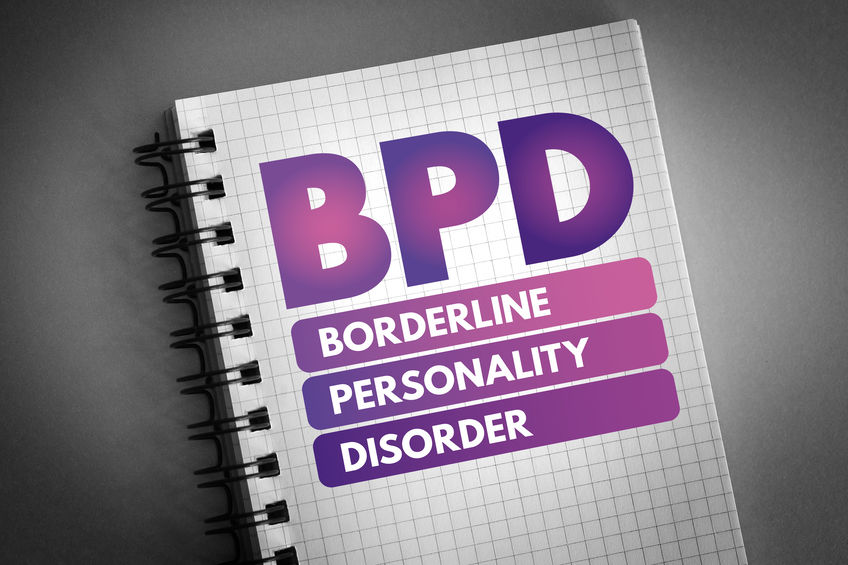Borderline Personality Disorder
Personality disorders are mental health conditions characterized by lasting, rigid, and dysfunctional patterns of feelings, thoughts, and behaviors. One of the most prevalent personality disorders in clinical populations is called borderline personality disorder (BPD).
People with BPD are impulsive, have a shaky sense of self, experience strong mood swings, and have unstable relationships.
In this article, we discuss the characteristics of BPD and its development. Let us begin with its diagnostic criteria.
Diagnosing Borderline Personality Disorder
The diagnostic criteria for a borderline personality disorder are outlined in the latest edition of the Diagnostic and Statistical Manual of Mental Disorders (DSM-5).
To receive a diagnosis, one must meet five or more of the criteria listed below.


Specifically, people with BPD…
desperately try to prevent potential abandonment.
- have unstable relationships (e.g., vacillating between idealizing and devaluing others).
- have an unstable sense of who they are.
- feel empty.
- show impulsive tendencies (e.g., promiscuity, excessive spending, overeating).
- display suicidal and self-mutilation tendencies.
- are emotionally unstable (e.g., have intense mood states, such as extreme anxiety).
- have difficulty controlling their rage.
Patients with BPD also have a tendency to undo the progress they have made just when a goal is within reach. For instance, they might repeatedly call in sick just when they are about to get promoted at work. Indeed, interruptions in work, relationships, and education are common in these individuals.
Co-occurring mental health conditions in BPD comprise mood disorders, attention-deficit/hyperactivity disorder, eating disorders (particularly bulimia nervosa), substance abuse, posttraumatic stress disorder, and other personality disorders (e.g., paranoid personality disorder).
The lifetime prevalence of BPD in the general population is about 6%, with women being only slightly more likely than men to develop this condition. BPD is more common in individuals who are younger, single and have lower education and income.
How BPD develops
Borderline personality disorder often develops during adolescence and early adulthood. Biological factors may play a role in the development of BPD. As the DSM-5 notes, compared to the general population, the biological relatives of people with BPD are five times more likely to have this condition.
But this disorder does not develop in all biologically vulnerable individuals, so environmental factors also matter. According to Marsha Linehan’s biosocial theory, BPD develops as a result of the interaction between an individual’s biological constitution, including certain personality factors (e.g., emotional reactivity, sensitivity to negative emotions), and the person’s environment.
Specifically, if an emotionally sensitive child has his or her needs met regularly, and has an early family environment that is warm and nurturing, the person may never develop the disorder.
BPD in Children and Adults
In reality, the family environments patients with BPD recall were anything but. To illustrate, as children, when they expressed a negative emotion (e.g., “I’m really sad.”), they were validated only occasionally. Often they were ignored or directly invalidated—contradicted (e.g., “Stop lying, you are very happy.”), mocked (e.g., “You big cry-baby!”), etc.
Not only do such interactions result in feelings of tension and anger in an emotionally sensitive child, but they also make it difficult for the child to ever learn how to label his or her emotions correctly.
Not surprisingly, adults with BPD often have trouble validating or even identifying their emotions.
Many treatments for BPD—including an effective, evidence-based treatment called dialectical behavior therapy—help patients learn how to identify their emotions, self-validate, and satisfactorily meet their other emotional needs.
With regular therapy, these individuals become more self-aware, more in control, and more likely to have stable and fulfilling relationships.
What is Treatment-Resistant Depression?
Treatment-resistant depression is depression that has failed to respond to at least 3 antidepressant medications from different drug classes.
What is Spravato?
Spravato Nasal Spray is a new FDA approved medication for treatment of chronic depression in adults. Please fill out the form to download our patient guide to get more information on this medication, who is the right candidate, treatment options, and potential side effects.
Talk to your doctor to see if Spravato is right for you.
Please note that Spravato can only be administered in a medically supervised healthcare setting that has been recognized as a certified treatment center.
Download your copy of:
Spravato Patient Guide
Health Insurance
About us
Contact us
About Harbor Psychiatry & Mental Health
We believe outstanding healthcare is delivered when we merge the science of medicine with the compassion of our hearts. We refer to this as “head and heart together,” inspiring constant improvement and lasting success.
Psychiatrists Orange County CA
Psychologists Orange County CA
Contact us
Address: 4631 Teller, Suite 100
Newport Beach CA 92660
Phone: (949) 887-7187
Email: info@harbormentalhealth.com
